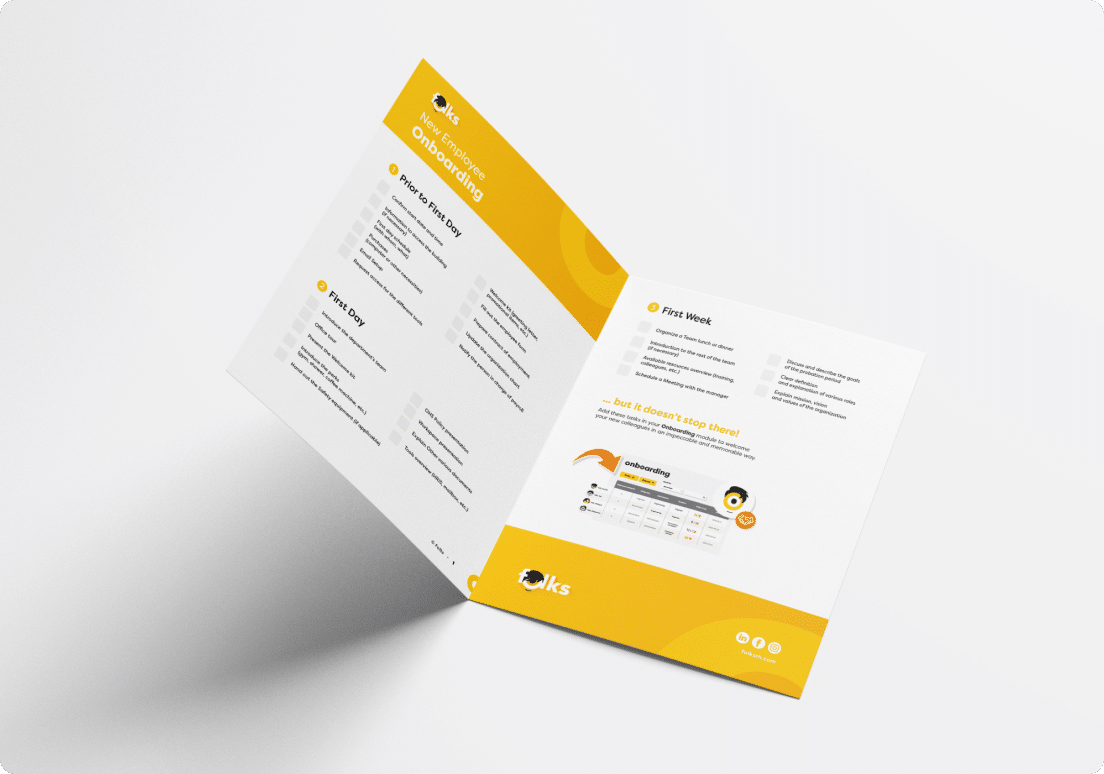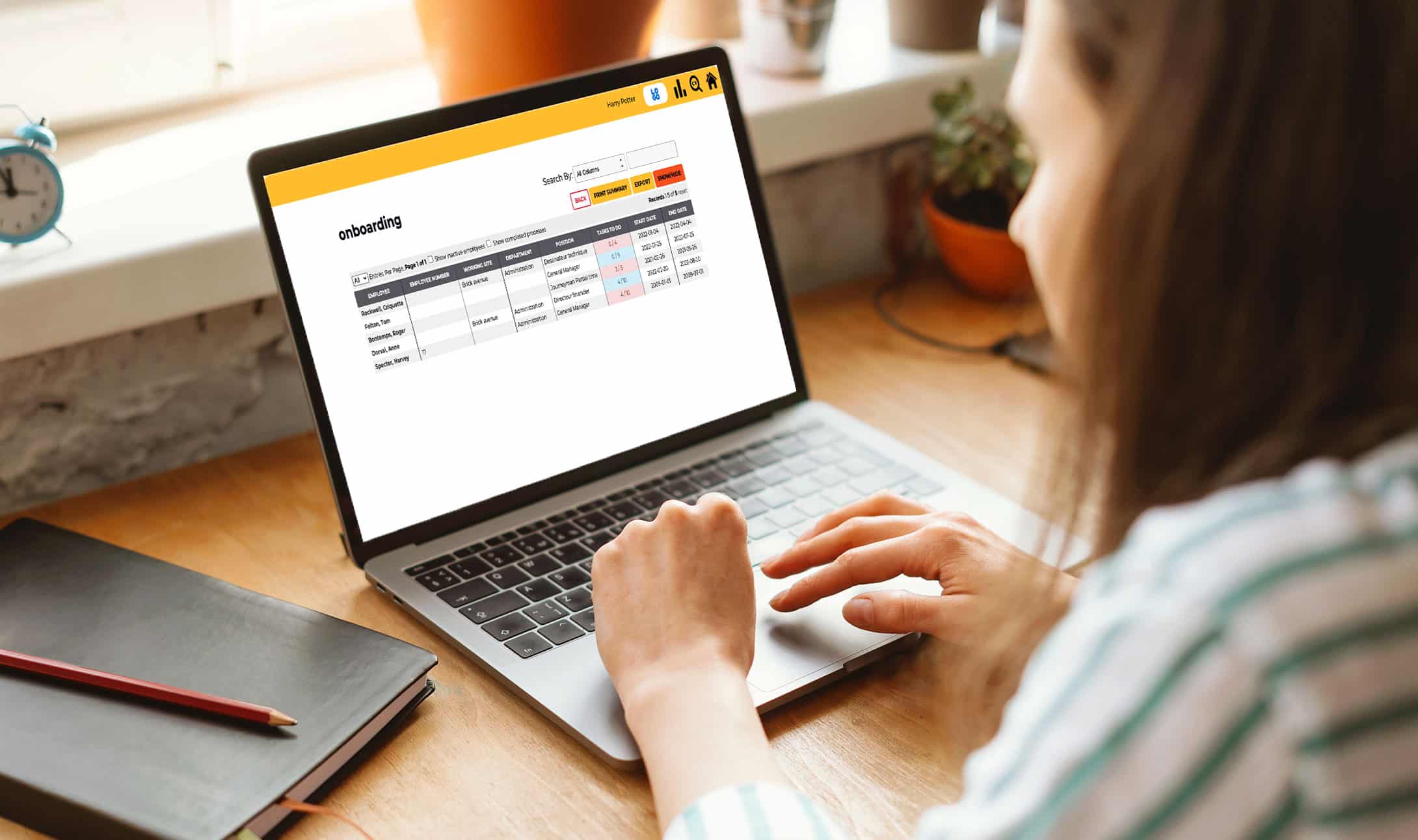We have already covered the creative dimension of the entire onboarding process on our blog. We even mentioned the most important statistics related to employee onboarding! But what about the administrative aspects of welcoming new employees in your company? Whether you are hiring for the first time or trying to create a smooth onboarding experience, you might need some guidance to get things right.
Here are all the essential onboarding documents for a successful onboarding process that meets your new employee expectations.
Psst… You will find all the onboarding document templates you need in this article.
Pre-onboarding Documents
A successful onboarding process starts way before the first day of employment! Pre-onboarding documents must be sent to your employee before they officially start their new job.
1) Job Offer Letter
The first document you should send is the employment offer letter containing the following information:
- Job title and job description;
- Date of employment;
- Hourly/annual salary;
- Direct managers’ names and information;
- Company mission statement.
We recommend that you send the employment offer letter quickly, as it ensures that the employee feels like they belong to your company… And stops looking elsewhere for their next job! First impressions matter and considering the current labour market, it’s important to hook the perfect candidate and build job satisfaction quickly and effectively.
You can get a free job offer letter example here.
2) Employment Contract
The employment contract form is a legal written agreement between the employer and the employee. As such, it needs to convey precise information about the new employee’s obligations to the employer.
- Employee’s responsibilities and a list of tasks;
- Information on salary;
- Employment duration;
- Benefits package and time-off policy;
- Non-compete or non-disclosure agreement;
- Code of conduct;
- Dress code;
- Etc.
Sending the employment contract before the starting date reduces the administrative burden the employee will shoulder during their first day. Therefore, you will get more time to focus on the creative and fun side of the onboarding experience later on.
You can check out your free employment contract example here.
3) Employee Documents
It’s important to get to know your new recruits before they start working in your company. Sending a questionnaire is a good way to get crucial information and ask for essential hire documents such as:
- Identification documents;
- Work or residence permit;
- Insurance / social security number;
- Emergency contact;
- Mailing information (address, updated phone numbers…);
- Direct deposit form for paychecks;
- Etc.
Furthermore, you can ask questions about the employee’s hobbies and interests to prepare an onboarding email you can send to their team before their first day. Collecting information on the employee can even help you guide and customize your onboarding process according to their individual needs and preferences.
Industry-specific Documents
Depending on the industry you’re operating in, additional documents might be required, such as safety and compliance guidelines, a list of test requirements (background checks, drug testing policy, etc.), and training certificates. These industry-specific documents must be sent to the employee right after they are officially hired, or requested on their first day of employment.
Company-specific Documents
During the first weeks of employment, the new hire will get more comfortable with their tasks and responsibilities and discover your company culture. Organizational charts will help them learn their coworkers’ names and positions. You also have to give them detailed payroll and benefits and company policies and regulations documents so that they can fit in. Last but not least, orientation paperwork and employee handbooks will provide them with useful information to get started and remember everything they need to know.
Onboarding Plan
An effective onboarding program reduces employee turnover while ensuring that you have productive employees on your team.
Your strategic plan should be divided into steps such as an introduction to company culture and other departments in the organization, setting up performance goals, providing job training and scheduling the first performance review.

Onboarding Checklist
When it comes to conducting a well-organized onboarding plan, nothing works quite as well as an onboarding checklist. You can use it to list every onboarding tasks you need to cover depending on the new employee’s position, and it can cover all the steps of your onboarding process.
Do you want to have an onboarding checklist example you can use whenever you need? Download your free employee onboarding checklist here!
Employee Onboarding Surveys
Now that you have all the information you need, it is time to make sure that have a strong onboarding process in place!
Asking your new employees about their onboarding experience is the best way to improve your hire retention rate and meet candidate expectations. Indeed, you can get a sense of what worked and what didn’t by collecting employee feedback.
Don’t forget to check out employee onboarding survey questions you should ask!
Creating an awesome onboarding experience takes time and dedication. You don’t want to risk neglecting your current employees and candidates because you are feeling overwhelmed. An efficient onboarding platform will automate your document management so that you can focus on what matters most: meeting the expectations of your new hire and reach business goals together!
Need an employee onboarding checklist to avoid mishaps?
Download our interactive checklist to create positive onboarding experiences!

